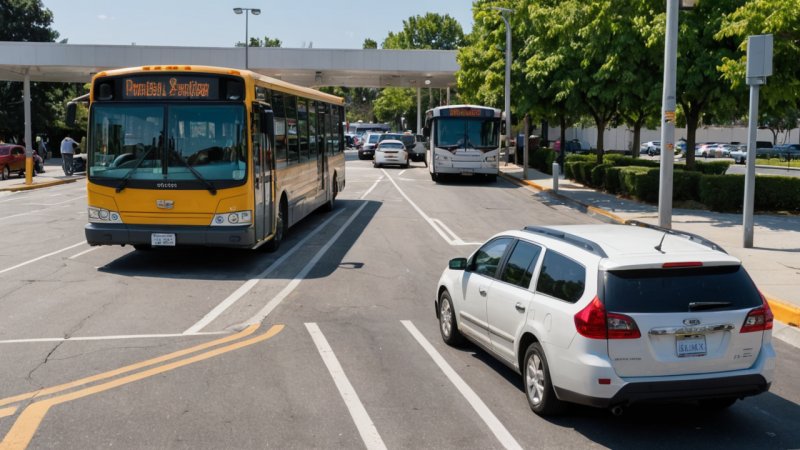Transportation plays a crucial role in shaping economic opportunities and access to essential services, especially for low-income communities. In the debate over how best to alleviate poverty, two primary modes of transportation often arise: public transportation and private vehicle ownership. Each has its pros and cons, influencing individuals' mobility, financial stability, and access to resources. This article explores the impact of public transportation versus private vehicle ownership on poverty reduction, helping to illuminate how each option can contribute to improving the lives of those in need.
Accessibility and Coverage
Public transportation systems, such as buses and trains, are designed to serve large populations, often providing extensive coverage across urban and rural areas. In contrast, private vehicle ownership offers personalized mobility, but its accessibility varies significantly based on individual circumstances.
Public Transportation
- Pros: Public transportation can reach areas that may be underserved by other means, providing access to jobs, education, and healthcare for those who cannot afford a car.
- Cons: Coverage may be limited in rural areas, and schedules can be infrequent, making it less reliable for individuals with demanding work hours.
Private Vehicle Ownership
- Pros: Owning a vehicle allows for greater flexibility in travel, enabling individuals to reach destinations that may not be accessible via public transport.
- Cons: The cost of purchasing, maintaining, and insuring a vehicle can be prohibitively expensive for low-income families, potentially leading to financial strain.
Cost Implications
Cost is a significant factor in the transportation debate, particularly for individuals living on low incomes. Understanding the financial implications of each mode of transportation is essential for evaluating their effectiveness in poverty reduction.
Public Transportation
- Pros: Generally, public transport fares are subsidized by government funding, making them more affordable for the average user. Monthly passes can also provide further savings for regular commuters.
- Cons: While initially less expensive, reliance on public transportation can add up over time, especially for individuals who need to take multiple transfers or face rising fare prices.
Private Vehicle Ownership
- Pros: For those who can afford it, vehicle ownership can provide significant time savings, allowing individuals to work longer hours or travel greater distances for better job opportunities.
- Cons: The total cost of vehicle ownership can be high, considering fuel, maintenance, insurance, and possible loan repayments, which can further entrench poverty if not managed properly.
Environmental Impact
The environmental implications of transportation choices also play a role in the broader context of poverty alleviation. Sustainable transportation options can help reduce pollution and improve public health, benefiting low-income communities disproportionately affected by environmental hazards.
Public Transportation
- Pros: Public transit is generally more environmentally friendly than individual car travel, as it reduces the number of vehicles on the road, leading to lower emissions per passenger.
- Cons: The environmental benefits can be undermined if public transportation systems are not well-maintained or if they rely on outdated, polluting technologies.
Private Vehicle Ownership
- Pros: Advancements in electric vehicles and fuel-efficient models can make private car ownership more sustainable.
- Cons: The sheer number of cars contributes to traffic congestion and pollution, which can have detrimental effects on air quality and public health, particularly in low-income neighborhoods.
Social Inclusion and Community Engagement
Transportation options can also influence social inclusion and community engagement. Access to reliable transportation can foster connections among community members and facilitate participation in social and economic activities.
Public Transportation
- Pros: Public transport serves as a communal space where individuals from diverse backgrounds can interact, promoting social cohesion and community engagement.
- Cons: Stigmas surrounding public transit use can discourage individuals from using it, leading to social isolation for those who rely on these services.
Private Vehicle Ownership
- Pros: Owning a vehicle can enhance personal freedom and facilitate participation in social activities, such as volunteering and community events.
- Cons: It can also lead to social stratification, where those without access to a car may feel excluded from community activities or job opportunities.
Conclusion
In the comparison of public transportation and private vehicle ownership as tools for poverty reduction, it is clear that both options have their merits and drawbacks. Public transportation offers affordability and accessibility, particularly for low-income individuals, while private vehicle ownership provides flexibility and convenience. Ultimately, the best solution may not be a one-size-fits-all approach but rather a combination of both systems that can accommodate the diverse needs of communities. Policymakers and community leaders should consider investing in robust public transportation systems while also creating programs that support low-income individuals in accessing private vehicles, thereby maximizing the potential for poverty alleviation.






